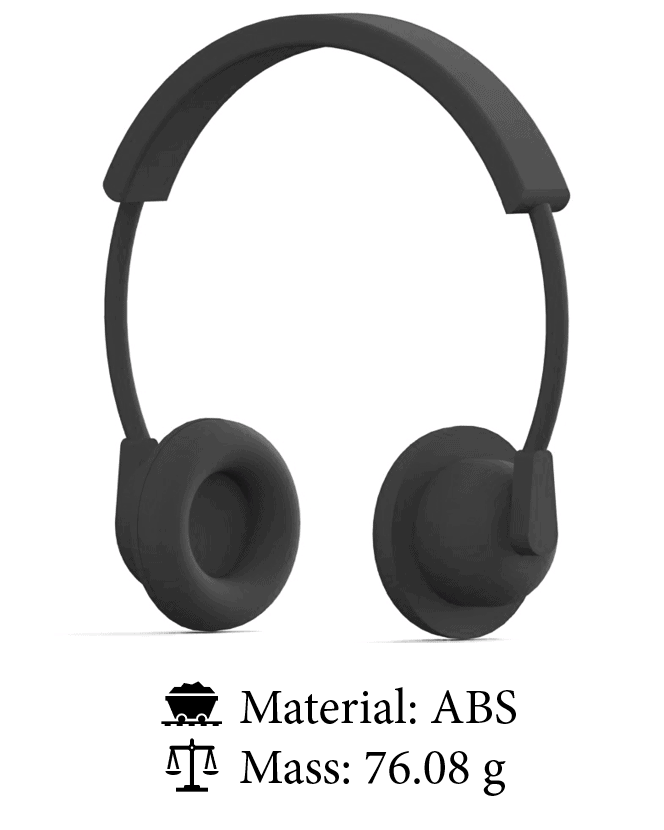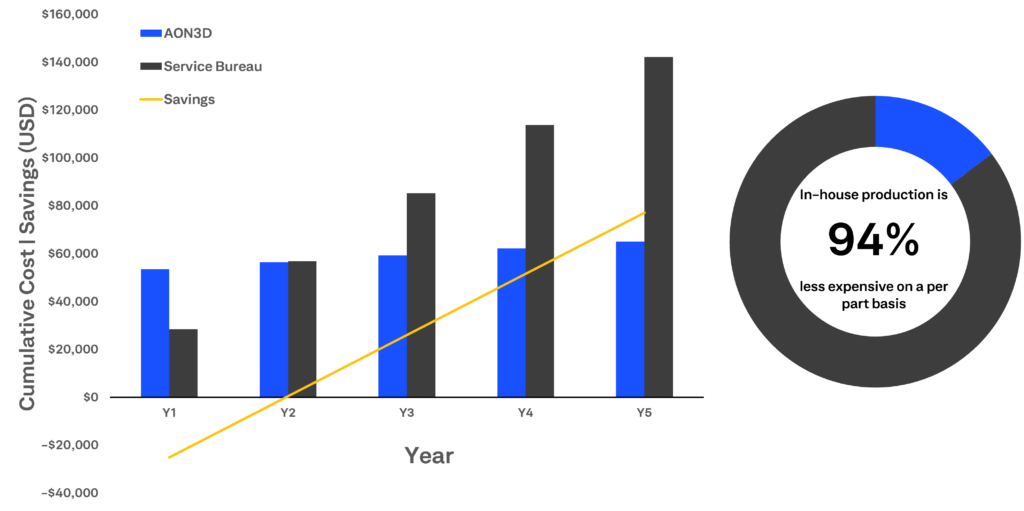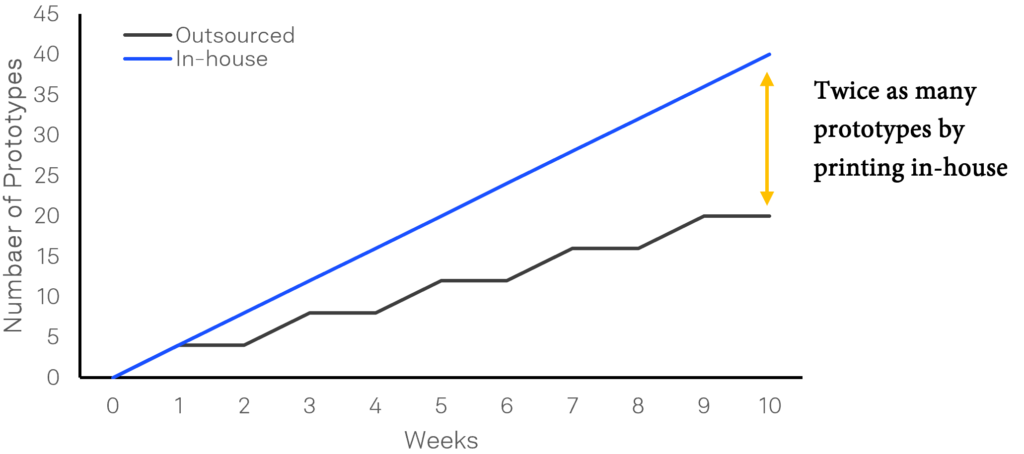3D Printing with PEEK, PEKK, & ULTEM™
Join AON3D's 3D printing application and materials experts for a 30-minute session that covers all the key information
Additive manufacturing (AM) can be implemented at several stages in product development to increase manufacturing efficiency, lower operating costs, and decrease time to market. But how do you determine if your business will benefit from purchasing an industrial fused filament fabrication (FFF) printer? This article will analyze the differences between in-house vs outsourced 3D printing, using a benchmark part. The delineated cost, time and additional considerations will help you decide on the best solution for your production requirements.
Prototyping Consumer Headphones

A set of consumer headphones is selected to demonstrate the differences between outsourcing and in-house 3D printing. The AON M2+ is chosen as the in-house printer and a production rate of 4 parts per week is selected for a 5-year period. The summary below demonstrates the direct cost and time differences by prototyping with an in-house AON M2+. The supporting analysis for these figures is presented in the next section using the information in the previous total cost of ownership article.
In-House
Cost Per Part
$4.24
Lead Time
5 Hours
Service Bureau
Cost Per Part
$75.79
Lead Time
1 Week
Cost Comparison

The capital expenditure for purchasing a 3D printer drives up the per part cost in the first year of production. For a short-term design phase, using a service bureau may provide a more economic solution. However, it is inefficient to outsource prototyping beyond a year. In fact, the expected return on investment with the M2+ printer is 2.0 years after the initial purchase. Companies could payback the cost of the printer even sooner with a higher production rate. The per part cost when owning a printer is 94% lower than the quoted outsourcing price, which equates to just under $5 to print a set of consumer headphones.
In addition to higher per part costs over the production lifetime, service bureaus may incur greater lead times from part design to prototype delivery. The next section covers the differences between an in-house and outsourced printing schedule.
Lead Time Comparison

For in-house printing, the time required to design, print (~5 hours), and remove support encompasses the lead time between prototypes. Outsourced printing often has a lead time of 1 week between a design quote and the final prototype delivery. After 10 weeks, the cumulative time lag limits prototypes to half of the expected in-house production volume. Moreover, the paperwork required to onboard new suppliers can further drive inefficiencies in prototyping.
So not only can you make parts twice as frequently with in-house production, you can also simplify your workflow. The final section of this analysis describes a few additional considerations for in-house 3D printing.
Additional Considerations
- IP protection – By owning a 3D printer, businesses manage their own digital inventory and mitigate risks with distributing product designs.
- Process optimization – Owning a 3D printer grants a business flexibility to optimize the manufacturing process and develop the highest quality product.
- Efficient production – Developing an AM expertise within a company can inspire applications in other stages between ideation and end-use products. For example, manufacturing jigs and fixtures for quality control can be easily implemented with custom 3D printed designs.
Verdict on In-house vs Outsourced 3D Printing
For one-off part production and low volume testing, outsourced printing provides a worthwhile solution for business to adopt AM into their product’s workflow. However, purchasing a 3D printer provides a more economical solution for consistent prototyping and integration of AM into a company’s operations. Companies gain a competitive advantage over businesses without additive manufacturing resources by increasing efficiency in product development and decreasing a product’s time to market.
Achieve New Levels of Part Performance & Throughput
3D print the world's highest performance polymers - bigger, faster, and stronger than ever.

